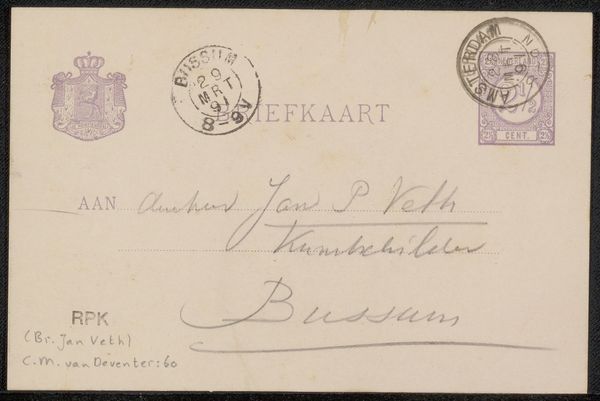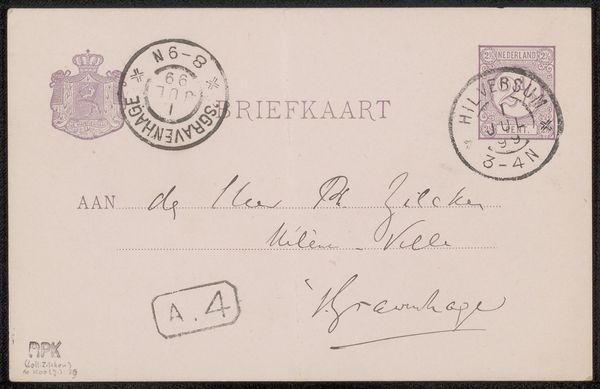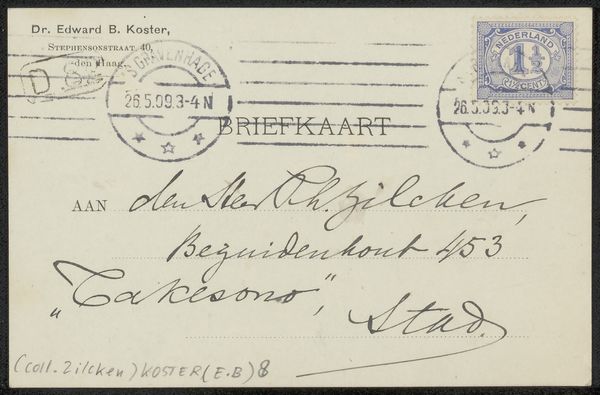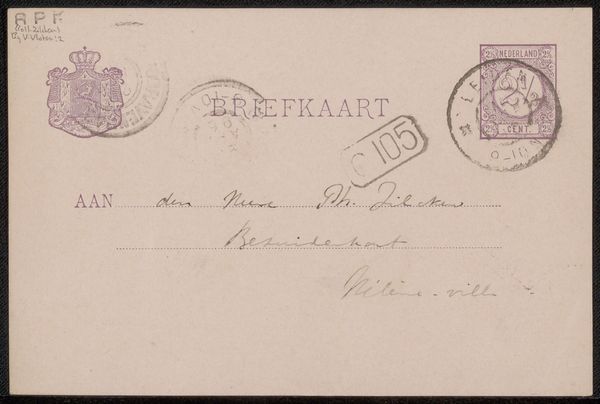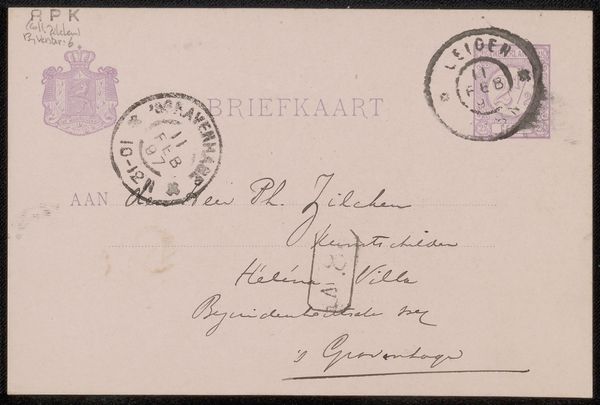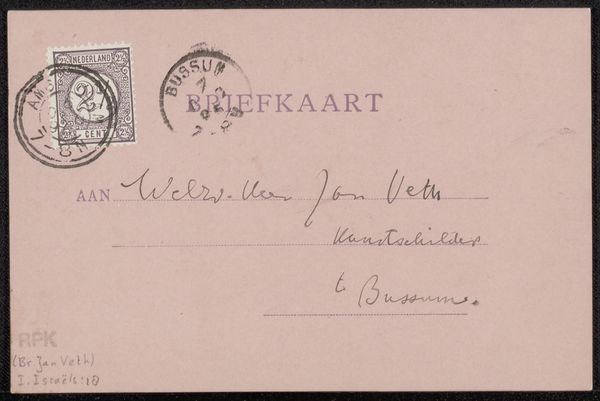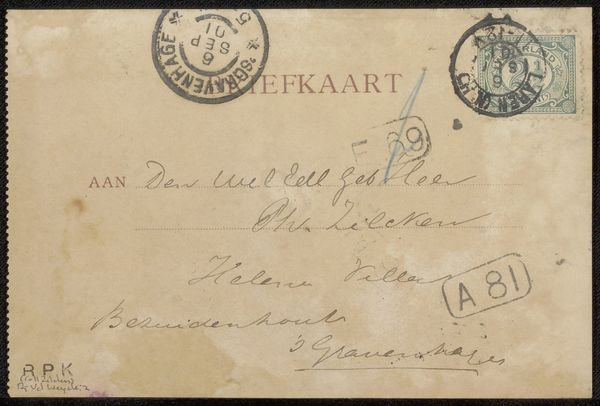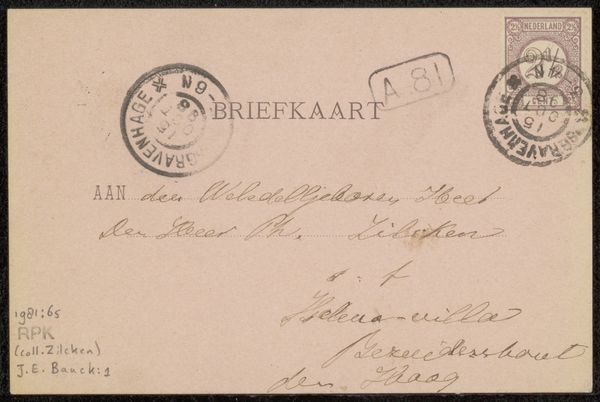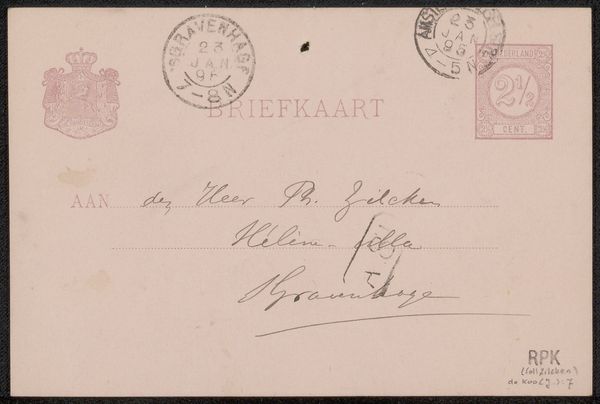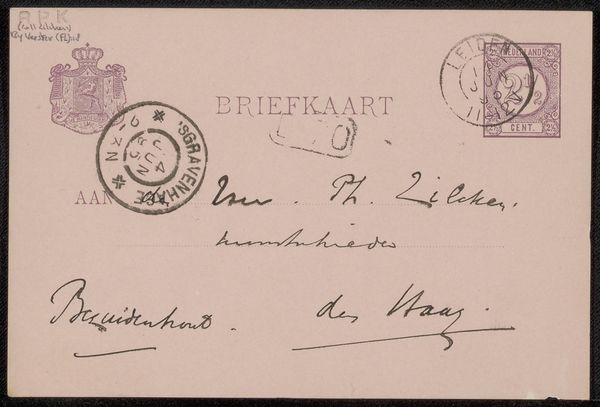
drawing, paper, ink, pen
#
drawing
#
paper
#
ink
#
pen work
#
pen
Copyright: Rijks Museum: Open Domain
Editor: We're looking at "Briefkaart aan Philip Zilcken," or "Postcard to Philip Zilcken," by Johannes de Koo, made before 1898. It's an ink drawing on paper, essentially the back of a vintage postcard. The handwriting is beautiful, but it's also like a little puzzle of a different era. What story do you think this little piece is trying to whisper? Curator: Ah, a whispered story is exactly what it is. I see not just ink on paper, but a relic. Imagine holding this; you're touching the past, the very hand that wrote those words. It's more than just communication; it's connection across time. The pen work itself, the swirls of the signature, hints at the writer's personality, don't you think? I wonder, what was the purpose of the sender when choosing pen as their primary mode? Editor: I agree, that the medium provides a snapshot of the personality sending it, and what exactly they considered the most appealing tool for this specific artwork. This really highlights the sense of holding a snapshot in history. I find this interesting to consider, since they would've used different technologies in their everyday life. Do you have a particular interest or perspective when viewing an artist such as this? Curator: For me, it’s about embracing the imperfections. Today's digital world favors sleek, flawless communication. This postcard is a beautiful revolt against that, with its smudged ink, faded stamp, and imperfect handwriting. The intended feeling feels inherently and refreshingly human to me. Editor: Absolutely. The humanness seeps through, and it gives the artwork an intimacy that a perfect digital scan simply couldn't replicate. It reminds us that art isn't just about the image; it’s about the experience. Curator: Exactly! A tangible piece of history and human life and interaction to reflect and admire the connection.
Comments
No comments
Be the first to comment and join the conversation on the ultimate creative platform.
